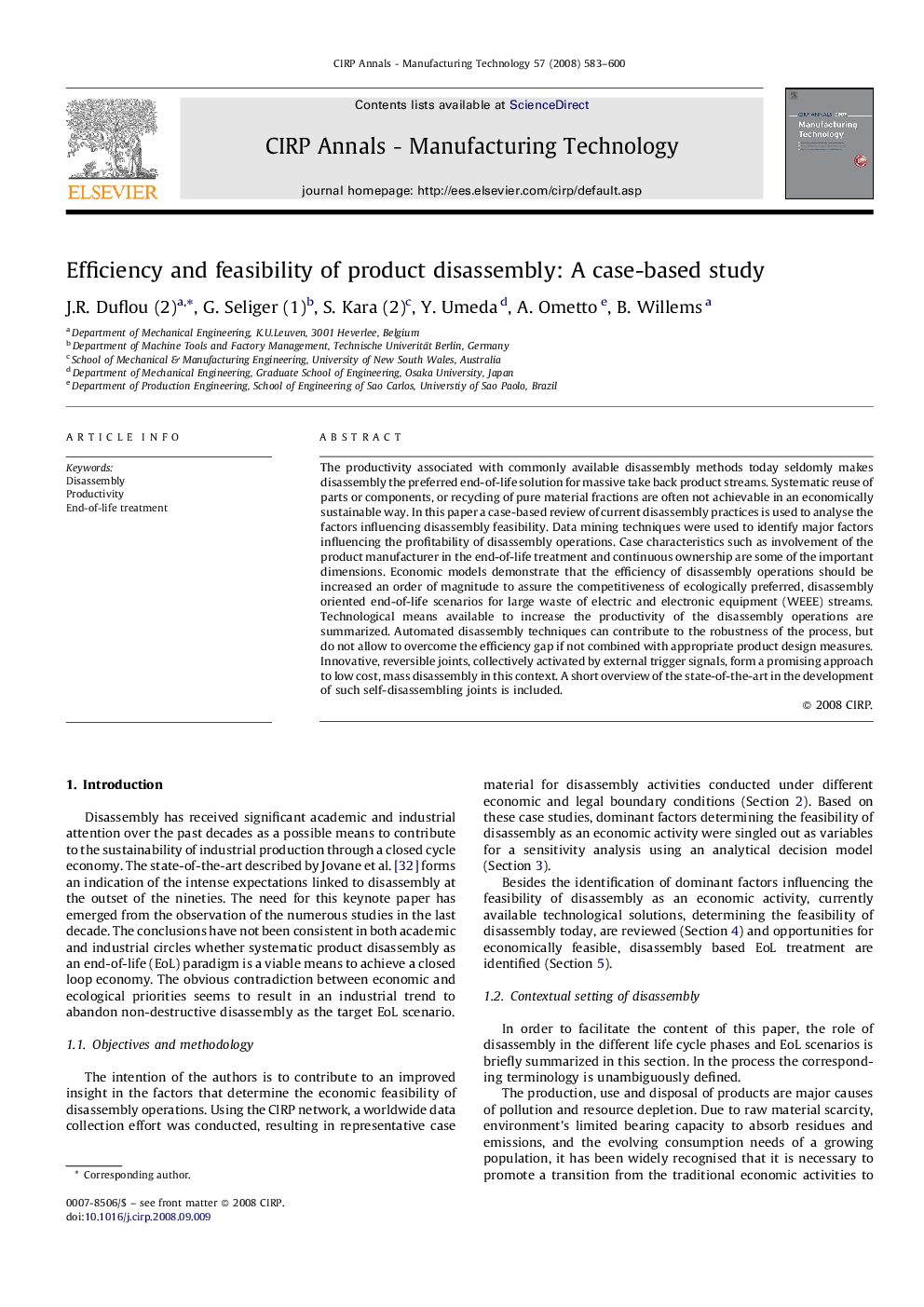| Article ID | Journal | Published Year | Pages | File Type |
|---|---|---|---|---|
| 1679235 | CIRP Annals - Manufacturing Technology | 2008 | 18 Pages |
Abstract
The productivity associated with commonly available disassembly methods today seldomly makes disassembly the preferred end-of-life solution for massive take back product streams. Systematic reuse of parts or components, or recycling of pure material fractions are often not achievable in an economically sustainable way. In this paper a case-based review of current disassembly practices is used to analyse the factors influencing disassembly feasibility. Data mining techniques were used to identify major factors influencing the profitability of disassembly operations. Case characteristics such as involvement of the product manufacturer in the end-of-life treatment and continuous ownership are some of the important dimensions. Economic models demonstrate that the efficiency of disassembly operations should be increased an order of magnitude to assure the competitiveness of ecologically preferred, disassembly oriented end-of-life scenarios for large waste of electric and electronic equipment (WEEE) streams. Technological means available to increase the productivity of the disassembly operations are summarized. Automated disassembly techniques can contribute to the robustness of the process, but do not allow to overcome the efficiency gap if not combined with appropriate product design measures. Innovative, reversible joints, collectively activated by external trigger signals, form a promising approach to low cost, mass disassembly in this context. A short overview of the state-of-the-art in the development of such self-disassembling joints is included.
Keywords
Related Topics
Physical Sciences and Engineering
Engineering
Industrial and Manufacturing Engineering
Authors
J.R. Duflou, G. Seliger, S. Kara, Y. Umeda, A. Ometto, B. Willems,
